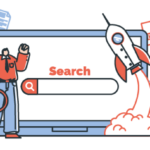Not all users are equal, and not all online buyers will respond equally to one ad campaign or another.
Many companies develop a single marketing strategy that tries to trap all their users, potential customers and large buyers with the same message. Without data and information to direct it, that campaign is the equivalent of mass mailings or spamming and never works with all customers. Not all users are equal, and not all online buyers will respond equally to one ad campaign or another.
A study from Forrester on the state of analytical of consumers in the year 2012 points out that predictive analytics is the best ally of companies to discover more about your customers and to expand the knowledge about what they want and what does clicking on ‘buy’ rather than go home with empty hands. User data can be translated into business opportunities for online companies, and can create business strategies based on data (instead of betting). To do this, companies need to know their customers: instead of having data about millions of users, it is more useful to have segmented information about the thousands of people who generate safe profit to be able to address them.
Companies face a range of potential customers: the big buyers, the undecided, the window shoppers, those looking for deals or who are allergic to the internet. In order to succeed, one has to try to get everyone right, but concentrate on those that generate the greatest value for the company.
In order to understand the main types of users that retailers face, we list the four most frequent and how to catch them.:
window shoppers
As in street stores, sometimes people enter web pages simply to gossip. These are people who can spend hours looking at different products or services, look at everything in detail, but never click on buy. These people may have registered on your site as buyers, but they may never have bought anything. They like to explore and retailers should encourage them to continue doing so to build confidence and spread the word about service. With persuasion and offers as these users can become buyers. It is advisable, however, that retailers do not put all their efforts on this type of customer as they have not yet generated profits and there is no guarantee that they will do so in the future.
Shopping lovers
They are the best type of customer without a doubt for the online retailers. These are people who go to the internet instead of conventional shops to find what they want with comfort and speed. For these people, finding what they want in as few clicks as possible is key to always choosing this website and not another. They are people who need to see the company establish a connection with them, listen to what they want and be shown a value added service so that they do not go elsewhere to shop. These are the most profitable customers, so it is important never to ignore them.
Fearful users
They are people who (A) are not familiar with the online world or (b) are afraid of the internet. These users will have an absolute distrust of the site until they can make sure it is trustworthy. In front of these people, the initial transmission of trust is key. If they feel the Website is trustworthy, terms and conditions of use are present in a first instant and reviews from other customers and warranties are good, they are likely to become a shopping lover. Transparency is key.
Search engines
People who come online to search for the best offers, thinking that on the internet they can find the cheapest price for what they want, are perhaps the hardest to predict for companies. An online retailer cannot function profitably if it thinks that all its customers are of this type (there would be a domino effect of falling prices that would cause bankruptcy and despair) so, within the offer of quality and personalization, it should be borne in mind that these people may or may not accept the offer of the site depending on the price or quantity.
Source: http://www.abc.es/tecnologia/redes/20130305/abci-cuatro-tipos-compradores-online-201303041459.html


 Español
Español

